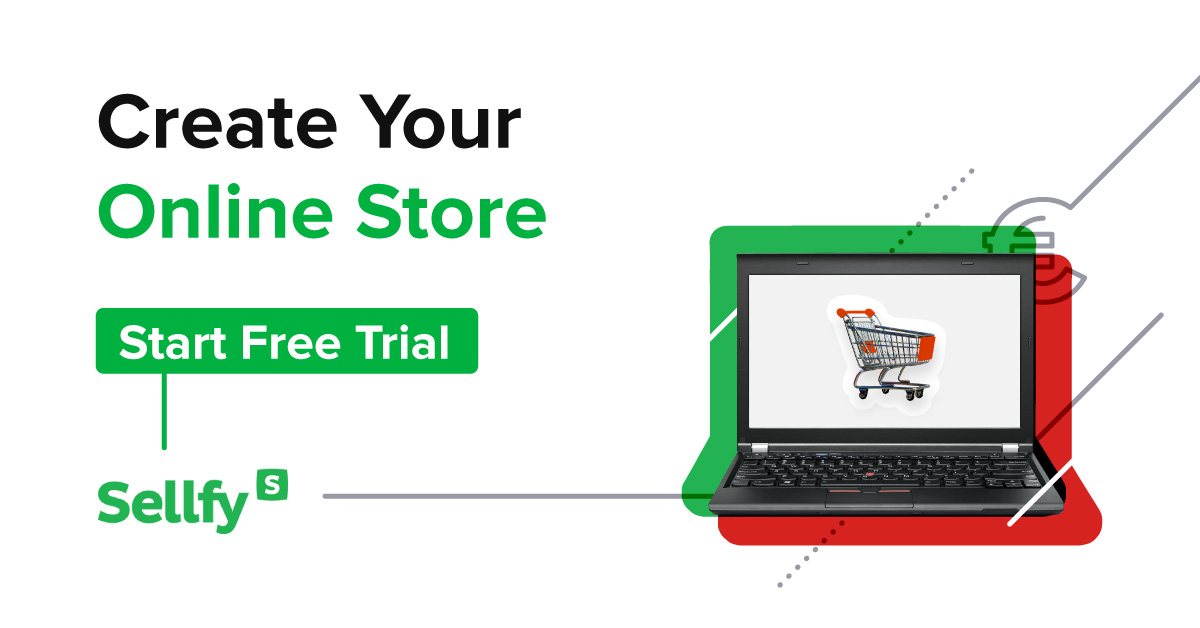You’re comparing Sellfy and Shopify for your online store, focusing on their top features. Sellfy is more affordable at $29 to $159 per month and excels in ease of setup with its user-friendly interface. Shopify, starting at $39 monthly, offers extensive customization options for a personalized store. Both platforms equally prioritize product management, featuring detailed inventory tracking and import options. Sellfy simplifies design for non-tech users, while Shopify caters to those who dive deep into coding. Marketing tools differ; Sellfy boosts direct email marketing, whereas Shopify capitalizes on a broader social media integration. Further exploration will reveal more about transaction fees, analytics, and customer support nuances.
Key Takeaways
- Sellfy offers easier setup and simpler customization, ideal for users without technical expertise.
- Shopify provides more extensive customization options, suitable for deep technical integrations and a wider variety of themes.
- Both platforms offer robust product management and integration with social media, particularly Instagram and Facebook.
- Shopify’s marketing tools are more comprehensive, with better integration for broader social media strategies.
- Sellfy has a more flexible pricing structure with lower transaction fees, beneficial for smaller businesses or startups.
Pricing and Plans
When evaluating the affordability of ecommerce platforms, you’ll find that Sellfy and Shopify offer distinct pricing structures designed to cater to various business sizes and needs. Sellfy provides a range of plans from $29 to $159 per month, appealing to small to medium-sized businesses looking for subscription flexibility. Conversely, Shopify starts at $39 per month after an introductory trial, targeting perhaps a slightly higher initial investment but with robust features.
Sellfy stands out with its discount options, offering substantial long-term savings. Opting for yearly payments slashes prices by 40%, and a commitment to a two-year plan further reduces costs to between $19 and $99 per month. This model not only makes Sellfy attractive for budget-conscious entrepreneurs but also for those planning to scale operations without frequent platform switches.
Shopify, while lacking in biennial discount options, provides a three-month trial at $1, which can be a critical cost-saving feature for startups testing the ecommerce waters. Both platforms show a keen understanding of different market needs through their pricing strategies, ensuring that businesses can start small and grow efficiently, leveraging these cost comparisons and subscription flexibilities smartly.
Ease of Setup
After examining the cost implications of Sellfy and Shopify, it’s equally important to take into account how easily you can set up your online store with these platforms. Both Sellfy and Shopify enhance user experience through their setup efficiency, but they cater differently to beginners versus experts.
Sellfy stands out for those who prefer straightforward, no-fuss setup processes. Here’s why:
- No Coding Required: Simply sign up, and you’re ready to start adding your products. This approach minimizes the learning curve and is ideal if you’re not technically inclined.
- Quick Setup: Sellfy promises that you can have your store live in just a few minutes, allowing you to focus more on sales than on setup.
- User-Friendly Interface: The platform is designed with simplicity in mind, making navigation and operation intuitive for anyone, regardless of their tech skills.
On the other hand, Shopify caters well to users who’ve a bit more technical savvy or those who seek deeper customization. While it offers a user-friendly interface and helpful tutorials, the wealth of options can seem challenging. This makes Shopify particularly appealing if you’re looking to scale or need specific, tailored features that require a bit more setup time.
Both platforms aim to streamline the process, yet your choice might depend on how much control and customization you need from the start.
Product Management
Managing your product portfolio on either Sellfy or Shopify is streamlined and intuitive, allowing you to efficiently categorize, track, and update your inventory. Both platforms support a diverse range of products, from physical goods to digital downloads, but it’s important to note that they exclude items related to gambling, smoking, and nudity.
When it comes to product categorization, both Sellfy and Shopify shine, providing you with robust tools to organize your offerings. This is essential as it enhances the shopping experience for your customers and makes managing your store less cumbersome. You’ll find that adding new products or variations is straightforward, and setting different categories helps in directing your customers to the right product quickly.
Inventory tracking is another key feature where Sellfy and Shopify excel. They both offer detailed insights into your stock levels, sales performance, and trends. This real-time data is crucial for making informed decisions about stock replenishment and for planning promotional strategies.
Additionally, the ability to import product designs from platforms like Redbubble and Etsy into both Sellfy and Shopify not only expands your inventory options but also simplifies the management process, ensuring you can focus more on growing your business.
Design and Customization
Exploring the design and customization features of Sellfy and Shopify reveals significant differences in their approach to user engagement and store personalization.
Sellfy simplifies the customization process, making it highly accessible for those without technical skills. You can easily tailor your online storefront with Sellfy’s user-friendly tools, focusing on enhancing your brand’s unique aesthetic without delving into complex coding. This ease of use guarantees that you’re not only designing a store but also crafting a seamless user experience that resonates with your audience.
Shopify, on the other hand, offers a broad spectrum of customization options that cater to both novices and experienced developers. With Shopify, you have the freedom to dive deep into the coding if you choose, which allows for a more detailed and custom layout. This can be a double-edged sword as it might require hiring a developer if your skills aren’t up to the task.
Here are three key points to take into account when evaluating design and customization on both platforms:
- Theme Options: Shopify has a wider variety of themes, which might be more appealing if you’re looking for high-level customization.
- Branding Control: Sellfy offers more straightforward tools for branding, ideal for beginners.
- User Experience: Both platforms aim to deliver smooth user experiences, but Shopify’s custom layout capabilities provide a more tailored approach.
Choosing between Sellfy and Shopify will largely depend on your specific needs in theme options, branding control, and the desired complexity of your user experience.
Marketing Tools Comparison
When comparing Sellfy and Shopify, it’s essential to focus on their marketing capabilities, particularly in the areas of email promotion and social media integration. Sellfy’s automated email reminders for cart abandonment are a smart tool to boost your sales conversions. Shopify’s robust integration with platforms like Instagram can greatly enhance your product visibility. Both platforms offer sophisticated tools designed to enhance your reach and engagement, but your choice might hinge on whether you prioritize direct email marketing strategies or a broader social media presence.
This distinction is crucial as it can influence how effectively you can target and engage with your audience, ultimately impacting your overall marketing success. With Sellfy, you can leverage personalized email campaigns to reach customers directly in their inboxes, while Shopify enables you to tap into the vast potential of social media platforms to drive traffic and sales. Ultimately, the decision between Sellfy and Shopify will depend on your specific marketing goals and strategies, as each platform offers unique strengths that can cater to different business needs.
Email Promotion Capabilities
Both Sellfy and Shopify enhance your ability to connect with customers by offering robust email marketing tools, pivotal in driving sales and improving engagement. These platforms utilize advanced features like email automation and segmentation strategies, enabling you to tailor your communication effectively.
Here’s how they compare:
- Email Automation: Sellfy and Shopify allow you to set up automated emails for cart abandonment and upselling, ensuring you’re maximizing every opportunity.
- Segmentation Strategies: Both platforms offer capabilities to segment your email lists based on customer behavior and preferences, making your campaigns more targeted and effective.
- Custom Campaigns: You can create custom email campaigns on both platforms, but Shopify’s integration with larger customer data sets provides a slight edge in personalization and reach.
Social Media Integration
Sellfy and Shopify enhance your marketing strategies by integrating robust social media tools that effectively drive traffic and boost sales from platforms like Instagram and Facebook. Sellfy’s Business Plan specifically supports Instagram and Google traffic generation, focusing on organic reach to enhance visibility.
Shopify leverages its integration features to connect with both Facebook and Instagram, facilitating not just traffic but also conversions.
Both platforms empower you to refine engagement strategies through sophisticated audience targeting, ensuring your content reaches the most relevant users. Additionally, they support content creation and influencer partnerships, which are essential in amplifying your brand’s presence and authenticity.
Leveraging these tools, you can significantly increase brand awareness and customer engagement, making the most of your online presence.
Payment and Transaction Fees
Understanding the differences in transaction fees between Sellfy and Shopify is essential as these costs directly impact your profit margins when selling products online. Here’s a focused fee comparison and cost analysis to guide your decision:
- Sellfy’s Varied Fee Structure:
- Sellfy charges a transaction fee of 2% on its Starter plan, which is favorable for new or small-scale sellers. As you scale up, the transaction fees decrease to 1% on the Business plan and drop to 0% on the Premium plan, offering significant savings for high-volume sellers.
- Shopify’s Sliding Scale Fees:
- Shopify’s transaction fees start at 2.9% + 30





